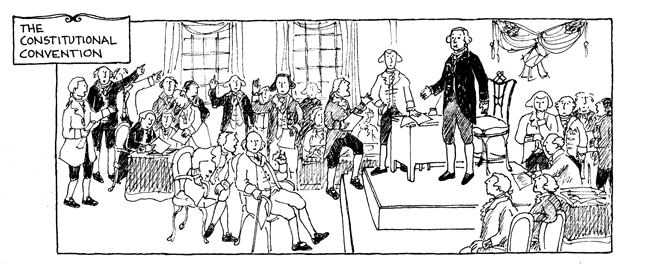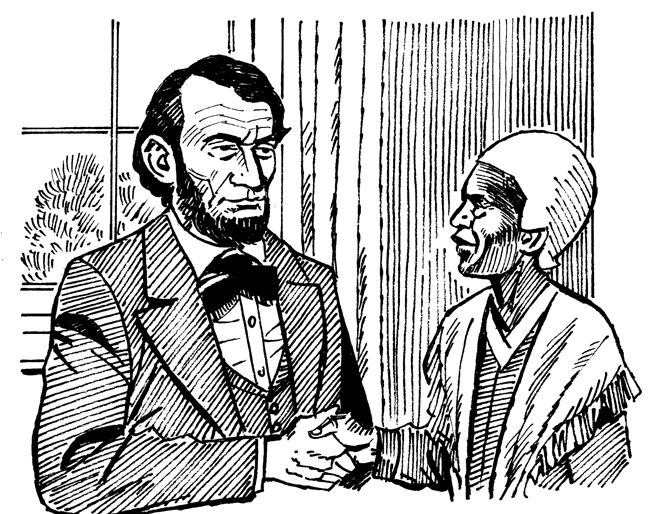What Can the President Do?
Answers from the Creators of the Who Was? Series
by the Brightly Editors
Launched in 2002 and with over 180 illustrated biographies published to date, the bestselling Who Was? series, created by Who HQ, has become a household name. Now, Who HQ has launched Who HQ Presents, a new series of short e-books (or “e-specials”) created specifically to answer young readers’ questions about newsworthy topics in a kid-friendly way. The first e-special in the series, What Can a President Really Do?, explains how the Executive branch works with the Legislative and Judicial branches. We’ve collaborated with Who HQ to offer a sneak peek at the series with What Can a President Really Do?, available in full — and for free! — right here.
After you’ve read What Can a President Really Do?, make sure to check out the other timely installments in the Who HQ Presents series: Why Are Women Marching?, Who Pays Taxes?, and the upcoming What Is Earth Day?.
What Can a President Really Do?
Who decides what a US president can really do? We, the people, through our government. Our democratic (that’s a small “d”) government is a fine-tuned system of checks and balances, where no one of our three branches of government can overpower another. (Doesn’t mean they won’t try, though!)

Who says? The Constitution lays it all out. It divides the US government into three equal branches with separate powers:
Legislative (Article I, Sections 1–10)
This would be the two chambers of Congress: the Senate (100 members, two from each state) and the House of Representatives (435 members, divided among the states based on their population). Congress is made up of the women and men elected by voters in individual states to legislate (or make the laws) for the nation.
Executive (Article II, Sections 1–4)
Ladies and gentlemen, the president of the United States … and the vice president, and the cabinet. That’s who makes up the executive branch, which is in charge of carrying out the laws.
Judicial (Article III, Sections 1–3)
The Supreme Court (nine of them equals a full house!) and the judges of other federal courts form the branch of government that evaluates the laws.
So who’s checking whom … and how? Well, Congress (legislative) could make a law and the president (executive) could veto it — though a two-thirds vote by Congress could override that veto. Or Congress could make a law and the Supreme Court (judicial) could declare it unconstitutional. That means that the law goes against what is written in the Constitution. Or the president could issue an executive order, a proclamation that carries the force of law, but the Supreme or federal courts could declare it unconstitutional. Meanwhile, the president nominates these judges and Congress has to confirm them. Check! Check! Check! Check!
Want to know more? You can read the Constitution’s 4,543 words yourself — and that includes the signatures of the delegates who put their names to it on September 17, 1787, at the Constitutional Convention in Philadelphia — at https://www.archives.gov/founding-docs/constitution.
There are two basic ways to look at what a president can really do: What can he or she do alone? (And we’re not talking sneak down to raid the White House fridge at night.) And when can’t the president go solo?
Mr. or Madam President, Your Call.
- You are the commander-in-chief of the US armed forces. You can send troops into battle (as long as it’s not an official war; see “Constitutional Fine Print” below). Or you can call up state units of the National Guard, or use emergency powers to manage national security or the economy, or declare federal disaster areas so that money and aid can be sent to help immediately.
- You can appoint ambassadors and meet with world leaders.
- You can nominate your cabinet, heads of government departments, and judges.

- You can issue executive orders.
- You can veto congressional bills.
- You can issue pardons for most federal crimes.
- You can convene special sessions of Congress.
- You can deliver a State of the Union speech to Congress.
- You can redecorate the White House. (Okay, that one’s not in the Constitution … and the famous Lincoln Room is off-limits!)
The Constitutional Fine Print — Or President Plus
- To formally declare war, you need Congress’s approval. Ditto to enact treaties with other countries.
- The terrible decision about launching a nuclear strike falls upon you, but your order to push the nuclear button must be verified by the secretary of defense.

- Congress has to approve your nominees for the Cabinet or federal courts before they can take office.
- You can propose a budget for the federal government, but the House of Representatives draws up the actual budget bill for Congress to vote on.
- You can’t raise or lower taxes, change the federal interest rates, repeal a law, or add or abolish constitutional amendments on your own.
By Order of the President
Throughout US history, presidents have used executive orders to get things done fast or as they saw fit. Some presidents really wielded that signing pen and some didn’t. At the low end, with only one executive order each, are presidents John Adams, James Madison, and James Monroe — not counting William Henry Harrison with an all-time low of zero orders. The undisputed champion is President Franklin Delano Roosevelt with a record-breaking 3,721 EOs! (You can look up every executive order issued since 1826 at http://www.presidency.ucsb.edu/executive_orders.php.)
What might a president order up?
Abraham Lincoln issued several executive orders during the Civil War which suspended habeas corpus. Habeas corpus is the legal protection that prevents a government from imprisoning you indefinitely without showing cause for doing so.

Theodore Roosevelt set aside public lands in Nebraska for experimental tree planting and gave some enlisted men in the navy a pay raise of two dollars a month.

Franklin Delano Roosevelt covered thousands of agenda items with his orders. During the Great Depression, he banned the hoarding of gold, put 8.5 million Americans back to work building roads, bridges, and parks, and creating public art through the Works Progress Administration, and signed an order to start getting electricity to the nearly 90 percent of rural areas that didn’t have it in the 1930s.

John F. Kennedy established the Peace Corps on March 1, 1961, which sent American volunteers to different countries to work on local economic, educational, and health projects.

Ronald Reagan extended the powers and responsibilities of US intelligence agencies and also established a task force on legal equity for women.

Barack Obama issued key executive orders on immigration, minimum wage for federal employees, and climate change.

Want to Learn Even More Cool Stuff? Check Out These Other Who HQ Presents e-Specials!
Explore the other e-specials below and learn more about the Who HQ Presents series here.
You can also read What Can a President Really Do? right on your reading device! Download the e-book for free via your favorite retailer.





